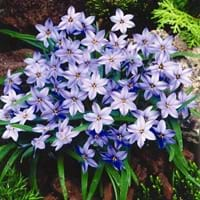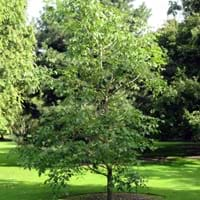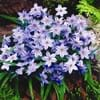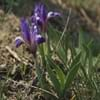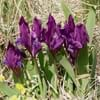Life Span
Perennial
Perennial
Type
Bulb or Corm or Tuber
Trees
Origin
South America, Argentina
Asia, Europe, North America
Types
Not Available
Black Ash, Blue Ash, California Ash, Carolina Ash, European Ash
Number of Varieties
Not Available
Habitat
Temperate Regions
Forest edges, Hillside, Woods
USDA Hardiness Zone
5-9
3-9
Sunset Zone
21,22
9, 12, 13, 14, 15, 16, 17, 18, 19, 20, 21, 22, 23, 24
Habit
Clump-Forming
Oval or Rounded
Flower Color
Light Blue, Light Purple, Silver, Sky Blue
White
Flower Color Modifier
Bicolor
Not Available
Fruit Color
Not Available
Not Available
Leaf Color in Spring
Green, Light Green, Gray Green
Dark Green
Leaf Color in Summer
Light Green
Dark Green
Leaf Color in Fall
Several shades of Green
Dark Green
Leaf Color in Winter
Light Green
Dark Green
Leaf Shape
Grass like
Oblovate
Plant Season
Spring
All year
Sunlight
Full Sun, Partial Sun, Partial shade
Full Sun, Part sun
Type of Soil
Clay, Loam, Sand
Loamy, Sandy
The pH of Soil
Acidic, Neutral, Alkaline
Acidic
Soil Drainage
Well drained
Well drained
Bloom Time
Early Spring, Spring, Late Winter
Late Spring, Spring
Tolerances
Drought
Drought, Pollution, Soil Compaction
Where to Plant?
Container, Ground
Ground
How to Plant?
By dividing rhizomes, tubers
Grafting, Seedlings, Stem Planting, Transplanting
Plant Maintenance
Medium
Medium
Watering Requirements
Average Water Needs, Do Not over Water, Requires regular watering
Does not require lot of watering, Medium, Prefer drip-irrigation instead of Over-head watering
In Summer
Lots of watering
Lots of watering
In Spring
Moderate
Moderate
In Winter
Average Water
Average Water
Soil pH
Acidic, Neutral, Alkaline
Acidic
Soil Type
Clay, Loam, Sand
Loamy, Sandy
Soil Drainage Capacity
Well drained
Well drained
Sun Exposure
Full Sun, Partial Sun, Partial shade
Full Sun, Part sun
Pruning
Remove damaged leaves, Remove dead branches, Remove dead leaves
Prune in winter, Prune prior to new growth
Fertilizers
All-Purpose Liquid Fertilizer
All-Purpose Liquid Fertilizer
Pests and Diseases
Slugs, Snails
Bark splits, Crown gall, Epicormic Sprouting, Woodpecker feeding
Plant Tolerance
Drought
Drought
Flower Petal Number
Single
Single
Foliage Texture
Medium
Medium
Foliage Sheen
Matte
Glossy
Attracts
Bees, Birds, Hummingbirds
Birds
Allergy
Not Available
Not Available
Aesthetic Uses
Showy Purposes
Not Used For Aesthetic Purpose
Beauty Benefits
Not Available
Not Available
Environmental Uses
Air purification
Air purification
Medicinal Uses
No Medicinal Use
Fever, Liver problems
Part of Plant Used
Flowers
Leaves, Stem
Other Uses
Not Available
Used as Ornamental plant
Used As Indoor Plant
Yes
No
Used As Outdoor Plant
Yes
Yes
Garden Design
Container, Lawns and Turf, Mixed Border, Rock Garden / Wall, Wildflower
Shady Tree, Showy Tree
Botanical Name
Ipheion uniflorum
Fraxinus
Common Name
Spring Starflower, Springstar
Ash Tree
In Hindi
Spring Starflower
राख पेड़
In German
Frühling Borretsch
Esche
In French
Spring Starflower
Frêne
In Spanish
primavera Flor de estrella
Fresno
In Greek
άνοιξη starflower
δέντρο Ash
In Portuguese
primavera Starflower
Freixo
In Polish
Wiosna Starflower
Jesion
In Latin
Spring Starflower
Fraxinum
Phylum
Magnoliophyta
Anthophyta
Class
Lilopsida
Magnoliopsida
Order
Asparagales
Lamiales
Family
Liliaceae
Oleaceae
Clade
Angiosperms, Monocots
Angiosperms, Asterids, Eudicots
Subfamily
Allioideae
Not Available
Number of Species
Not Available
Season and Care of Spring Starflower and Ash Tree
Season and care of Spring Starflower and Ash Tree is important to know. While considering everything about Spring Starflower and Ash Tree Care, growing season is an essential factor. Spring Starflower season is Spring and Ash Tree season is Spring. The type of soil for Spring Starflower is Clay, Loam, Sand and for Ash Tree is Loamy, Sandy while the PH of soil for Spring Starflower is Acidic, Neutral, Alkaline and for Ash Tree is Acidic.
Spring Starflower and Ash Tree Physical Information
Spring Starflower and Ash Tree physical information is very important for comparison. Spring Starflower height is 10.20 cm and width 5.10 cm whereas Ash Tree height is 75.00 cm and width 45.00 cm. The color specification of Spring Starflower and Ash Tree are as follows:
Spring Starflower flower color: Light Blue, Light Purple, Silver and Sky Blue
Spring Starflower leaf color: Green, Light Green and Gray Green
Ash Tree flower color: White
- Ash Tree leaf color: Dark Green
Care of Spring Starflower and Ash Tree
Care of Spring Starflower and Ash Tree include pruning, fertilizers, watering etc. Spring Starflower pruning is done Remove damaged leaves, Remove dead branches and Remove dead leaves and Ash Tree pruning is done Prune in winter and Prune prior to new growth. In summer Spring Starflower needs Lots of watering and in winter, it needs Average Water. Whereas, in summer Ash Tree needs Lots of watering and in winter, it needs Average Water.
